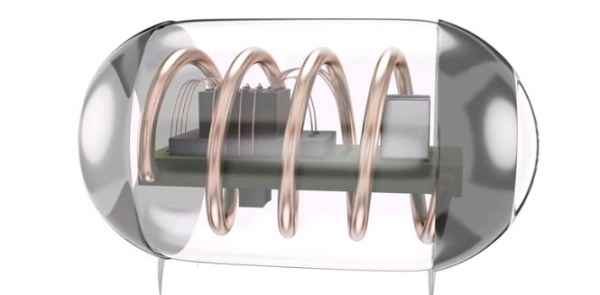A Stanford University engineer has figured out a way to wirelessly transfer energy to medical devices.
Why does this matter? Well, the technology may actually lead to electronics that can be used to replace pharmaceutical drugs.
Assistant Professor Ada Poon has developed a wireless system that uses power like a cell phone does in order to transmit energy to chips the size of a grain of rice.

The device being tested is about the size of a grain of rice. Enlarged above. (Image via Stanford)
These developments could lead to “electroceutical” devices that can treat illnesses or even diminish pain altogether.
After seeing that medical devices weren’t being as widely used as they could be because of large bulky batteries, Poon discovered a way to transmit power deep inside the human body. Then she built on that development and used the power to run electronic medical gadgets like pacemakers and nerve stimulators.
“We need to make these devices as small as possible to more easily implant them deep in the body and create new ways to treat illness and alleviate pain,” said Poon.
This technology may lead to a world where doctors are treating patients with electronics rather than drugs.
So Poon’s team created a pacemaker device that’s the size of a grain of rice and tested it on a pig. It can even be recharged wirelessly by simply holding a power source about the size of a credit card outside the body and above the device.
Poon believed her discovery will spark new kinds of microimplants (sensors that monitor vital functions inside the body), as well as new drug delivery systems.
Electronics vs. Drugs
William Newsome, director of the Stanford Neuroscience Institute, took an interest in Poon’s work because it creates an alternative to traditional drug treatments.
 A batteryless electrostimulator next to medicinal pills for size comparison. (Image via Stanford)
A batteryless electrostimulator next to medicinal pills for size comparison. (Image via Stanford)
According to Newsome, such “electroceutical” treatments could actually be more effective than drugs because an implanted device could directly monitor activity in specific brain circuits.
For more information visit Stanford University’s website.
Advertisement





